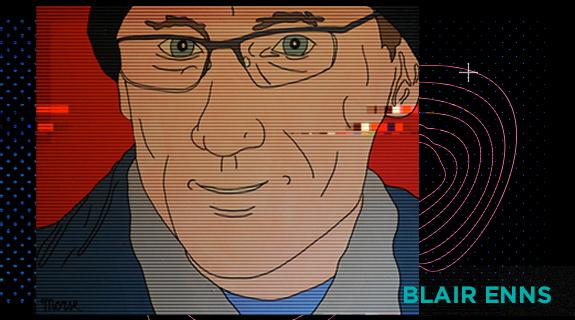The biggest asset a creative person has is the ability to bring fresh perspective to a problem.
But that same asset, according to Win Without Pitching founder and upcoming Conference 2014 speaker Blair Enns, is also the primary force behind “some bad practices when it comes to selling.”
The founder of the consulting firm Win Without Pitching, Enns travels the world on a quest to change the way creative services are bought and sold. The No. 1 thorn in his side? “The inefficiencies of the free pitch.”
It’s well known that the pitch process is costly for agencies and frequently sucks away valuable time that could be spent on other projects (and of course, both drawbacks sting all the harder when the pitch is not won, which is often). But Enns’ insight into the root of the problem is fascinating, and possibly revolutionary. It begins with that pesky ability to problem-solve.
“Creativity is the ability to bring perspective,” he told Brief. “If that’s your strength, then you are going to pursue problems that you have never solved before. That’s what creative people want to do. They crave variety and abhor routine. But really, you get better at what you do by solving the same types of problems over and over again.”
A look at almost any agency’s website shows a vast, colorful array of disparate projects for different clients. The impulse is to show the ability to do anything, anytime, for anybody. But “as a result,” Enns said, agencies “don’t build expertise, and they all look the same to different clients.”
When all the vendors pitching look the same to a client, the client has the power of choice. With the power of choice comes the power “to push the agency around, to get them to pitch stuff for free or to exert pressure on their pricing and profit margins,” said Enns. The first step to winning without pitching is to “get some of that power back… by reducing the number of choices the client has, narrowing your focus and solving the same types of problems over and over again. That’s contrary to what the creative mind really wants to do.”
Though Enns wants to balance power in the creative services’ buy-sell dynamic, he doesn’t “blame the client for asking for free pitching” in an environment where “there is an oversupply of sellers.” Nor does he see pitching as evil in and of itself. “I’m not on a mission to rid pitching from the planet,” he said. “It’s just a hugely inefficient way to sell creative services and to buy them as well.”
At his presentations, Enns tests how much power creatives have by practicing saying “no” to certain client demands and by setting up obstacles for a prospective client to overcome. Naturally, the goal isn’t to make the client’s life difficult but to know what it feels like to “do things differently,” Enns said. “If the client sees you as different they will grant you some concessions… when they don’t, those are the opportunities you should walk away from.”
But for a creative, the only thing harder than routine is walking away from an opportunity. “It’s a universal challenge for a creative person,” said Enns. “They have a hard time walking away from opportunity, even if it’s a poor fit.”
Pitching for whatever opportunity is on the table, regardless of whether it’s in their wheelhouse, is inefficient for both sides of the table, said Enns. Since most firms are fiercely competitive by nature, Enns suggested channeling that energy into “competitions they can game, and only play those games. The No. 1 indicator of winning business is whether or not a firm has gotten the client to treat them differently than the other firms, including [granting them the ability to] gain access to decision makers when they’re told that access is not allowed. If you can get concessions granted, the likelihood of your winning goes way up. Instead of entering a whole bunch of pitches, you try to game as many competitions as you can, try to get the rules changed to your benefit. And if you can’t get the rules changed, you walk away.”
Catch Enns’ session “Ditch the Pitch − and Build a Better Business” Thursday June 12, 10:30 am, at The Conference 2014 in New York.
Tags:













































__twocolumncontent.jpg)











